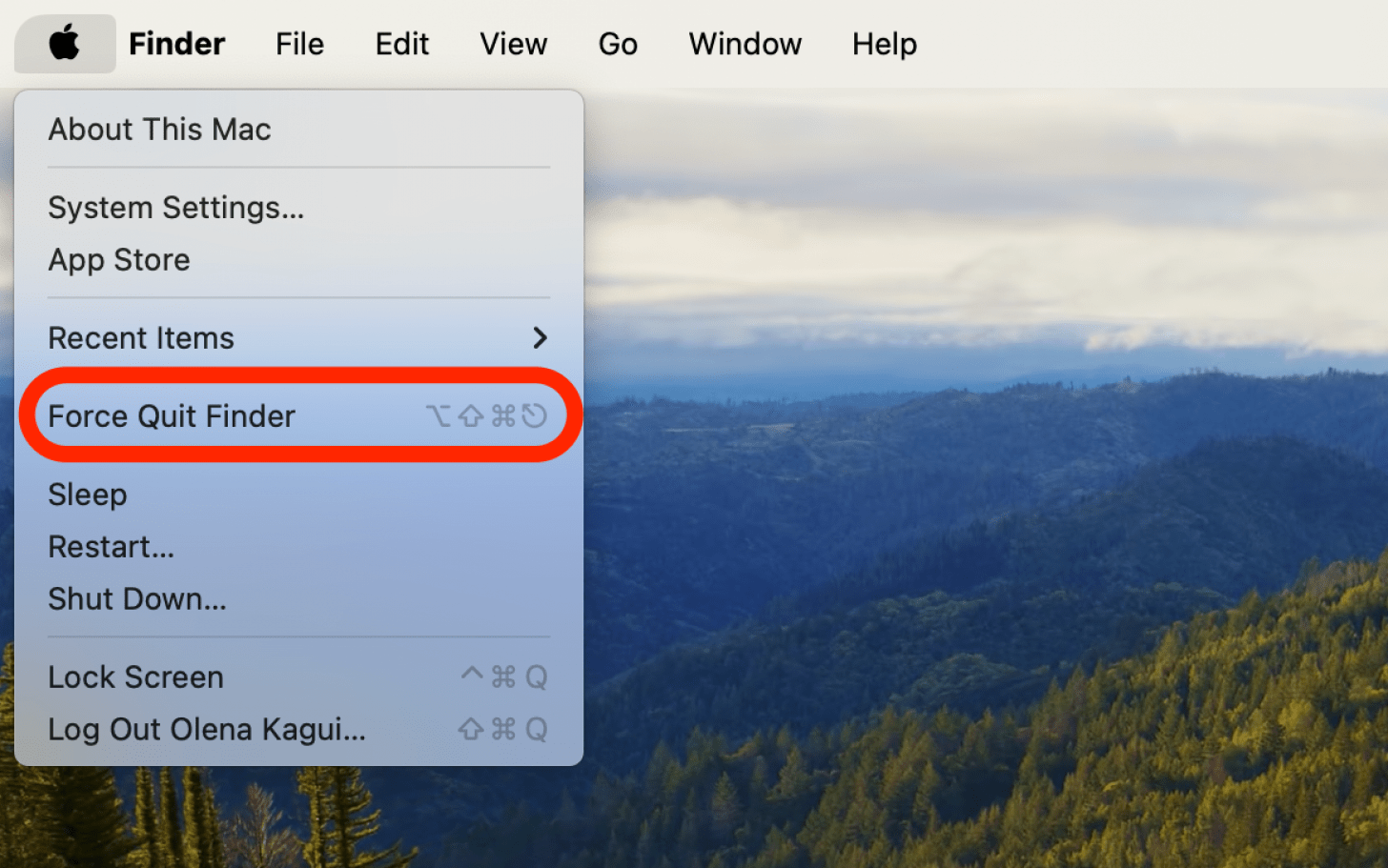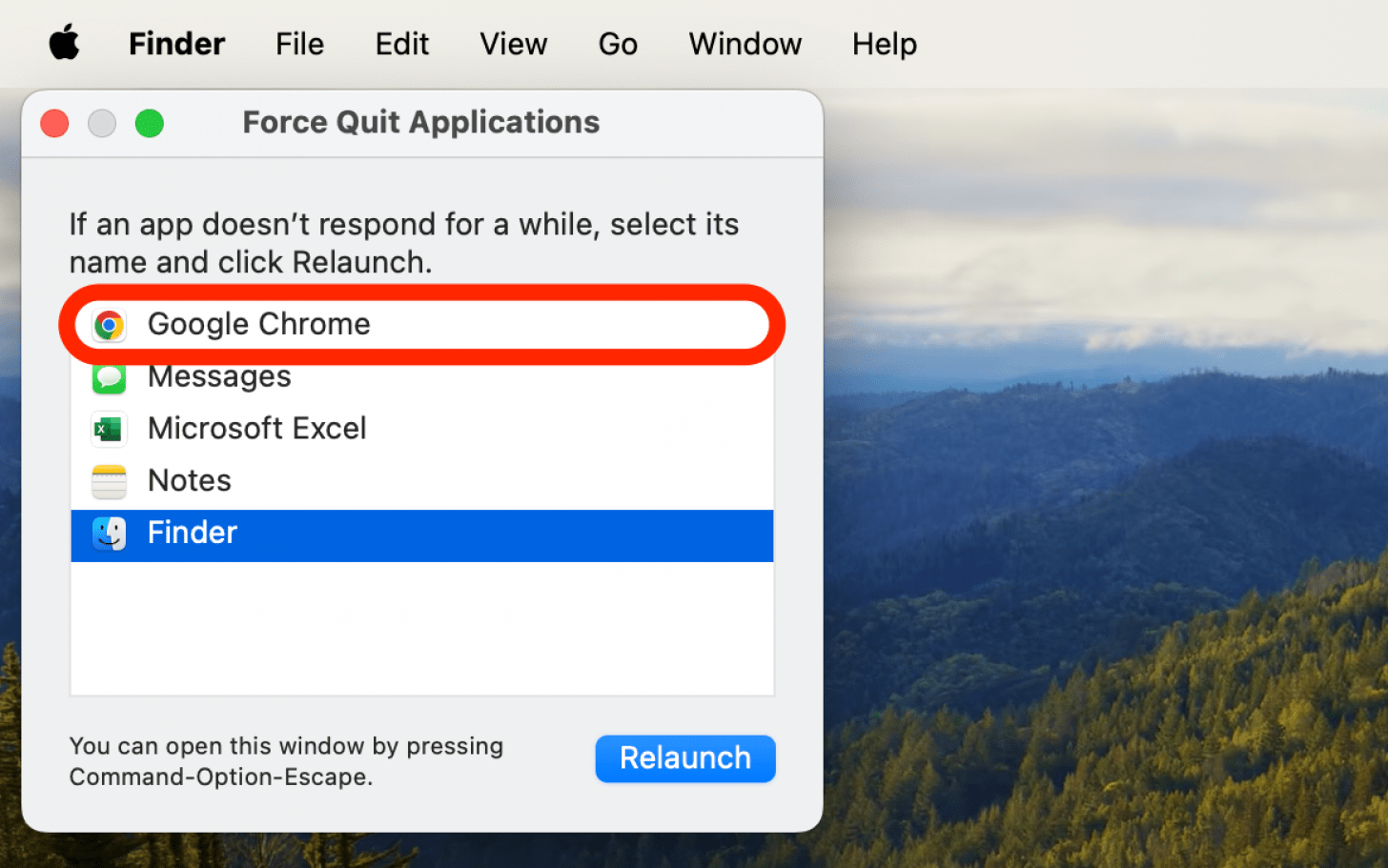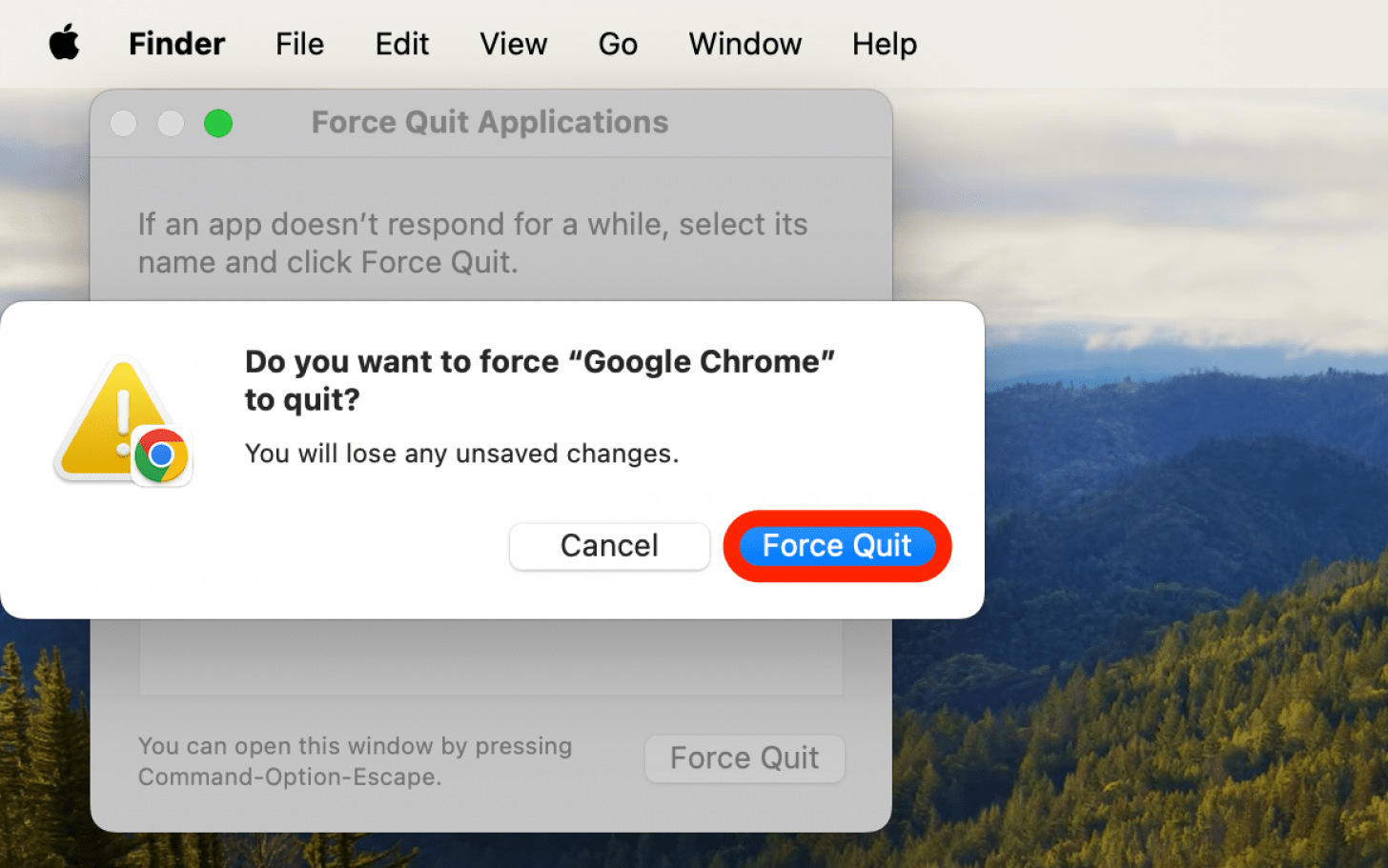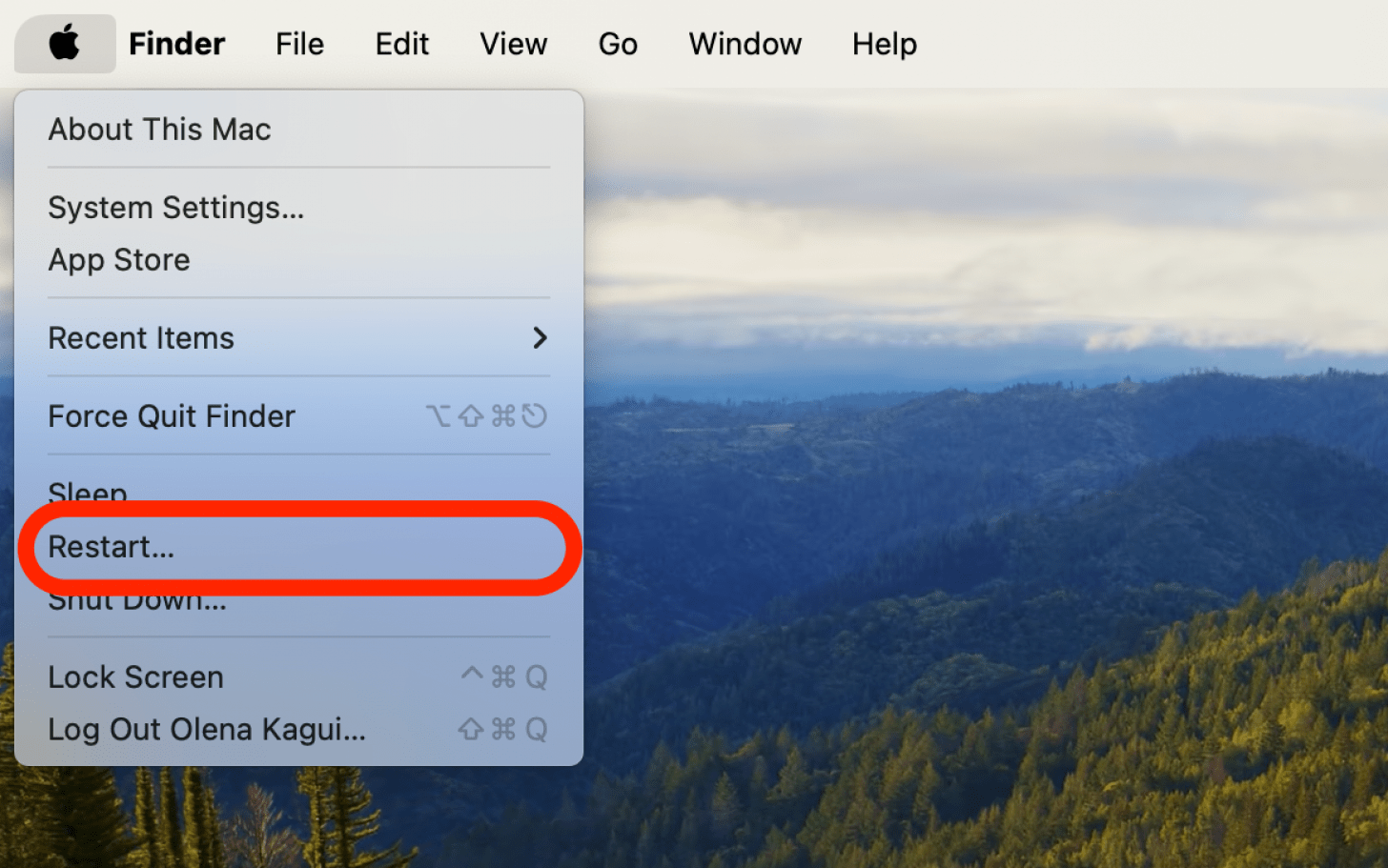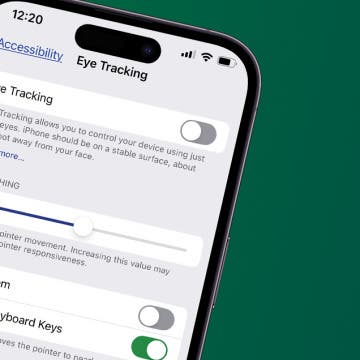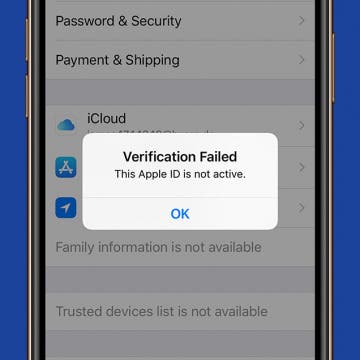What to Know
- The rainbow wheel of death is an appropriate nickname for the colorful circle that appears on your Mac’s cursor when your device is frozen.
- Sometimes the Mac spinning wheel of death will resolve on its own.
- Other times, you may need to force quit the problematic app or your entire Mac.
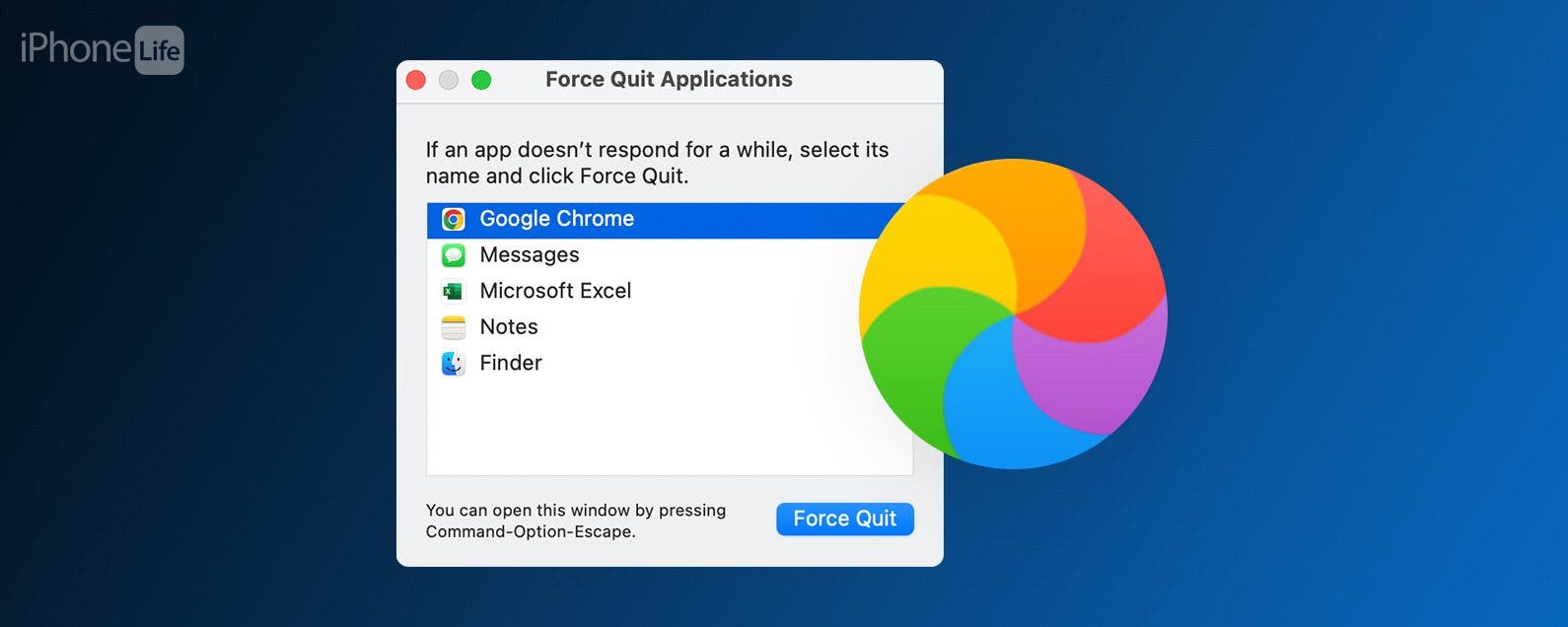
Why is my Mac so slow? As a Mac user, you’re probably familiar with the spinning wheel of death—even if you call it something else. Fortunately, there are a few things you can try that could help resolve the issue. That way you can spend a lot less time looking at the Mac wheel of death and a lot more time successfully using your Mac.
Jump To:
- Quick Fix for the Mac Spinning Wheel of Death
- Restart Your Mac
- Persistent Spinning Wheel of Death Issues
- FAQ
Quick Fix for the Mac Spinning Wheel of Death
Sometimes the spinning wheel appears for a few seconds, or only when you’re using a particular app. If that’s the case, you’re in luck! The issue is likely caused by that specific app instead of a system problem, and it’s likely that the problem will be resolved if you quit the app, either by simply closing it or by forcing it to quit if the app is unresponsive. To force quit an app on a Mac, follow these steps:
- Click on the Apple menu (or use the keyboard shortcut cmd+option+esc and skip to step 3).
![Click on the Apple menu]()
- Select Force Quit (you'll see either "Force Quit..." or "Force Quit [App Name]").
![Select Force Quit]()
- Choose the app that isn’t responding. Double-click it or click Force Quit.
![Choose the app that isn’t responding.]()
- Click Force Quit again to confirm.
![Click Force Quit again to confirm.]()
Now you know how to close apps on MacBooks. Be sure to sign up for our free Tip of the Day for more great Mac tutorials!

Note
The rainbow wheel of death is the most common nickname, but it is also called the color wheel spinner, spinning color wheel, colorful spinning wheel, color spinning wheel, rainbow color wheel, colorful circle, spinning rainbow wheel, and loading wheel.
Restart or Force Restart Your Mac
If the Mac wheel of death is spinning and causing too many issues to perform other functions on your computer, you may need to restart your Mac, or force restart it if you can't access the Apple menu. Here are instructions for both methods:
- If you can, click on the Apple menu.
![Click on the Apple menu]()
- Click Restart.
![Click Restart.]()
If you can't use your mouse or the computer won't respond, you'll need to force restart your Mac. Here's how to force restart MacBooks and Macs: hold down the keys cmd+control+power button (On a MacBook, this will be the same as your Touch ID button if you have one). Keep holding them until the screen goes black, and then release.
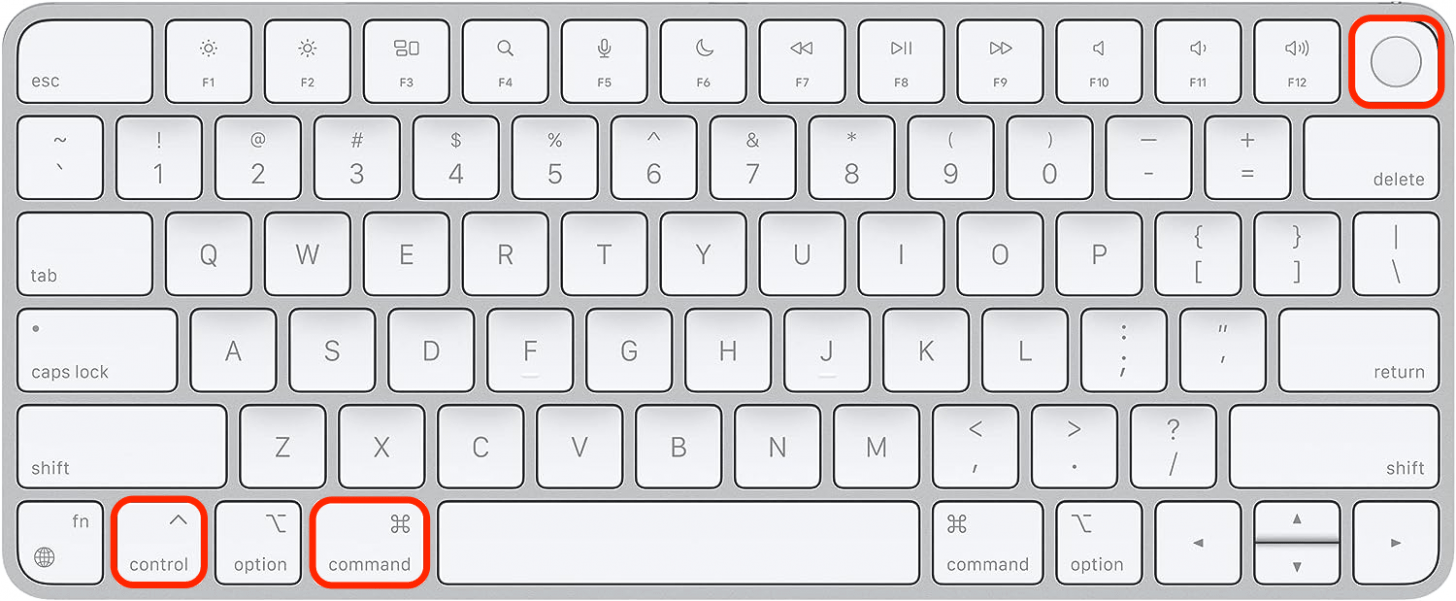
Now you know how to shut down a Mac if it's not responding. Your machine should restart as normal, giving you a fresh chance to do the work you were trying to do.
Persistent Spinning Wheel of Death Issues
If the steps above didn’t resolve your issues, it might not be such an easy fix. There could be several things contributing to a slow Mac or persistent spinning wheel of death, but some likely culprits are insufficient storage space or issues with your device's available memory.
Declutter Your Mac
One great way to speed up your mac is to free up space on it. Think of it like organizing your desk; the less clutter you have, the easier it is to focus on the task at hand. Your Mac is no different.
We recommend starting by either deleting unnecessary large files or applications you've downloaded but no longer use. Next, it's a good idea to see which files or media you're comfortable storing either on a removable hard drive or on iCloud so that you don't have to dedicate storage space on your Mac for those items. Once you've freed up storage space on your Mac you can feel free to delete old files, which should help it run faster.
Check Your Memory & Processing
Your Mac’s RAM, or Random Access Memory, allows it to run multiple programs simultaneously. The more RAM you have, the more processes can be running simultaneously without noticeably affecting your Mac's speed or function. Your Mac’s CPU, or Central Processing Unit, determines how quickly your Mac processes its tasks. In tandem, the RAM and CPU determine how efficient your Mac is and how well it handles large apps and complex processes.
- Open Finder on your Mac.
![Open Finder on your Mac.]()
- Go to Applications.
![Go to Applications.]()
- Click on Utilities.
![Click on Utilities.]()
- Click on Activity Monitor.
![Click on Activity Monitor.]()
- Check your Mac’s CPU activity in the bottom graphs.
![Check your Mac’s CPU activity in the bottom graphs.]()
If you know that your computer is healthy (no malware or similar issues) but the Activity Monitor shows your CPU isn't handling everyday tasks the way it should, it may just be that your computer's processor can't keep up with what you're asking it to do. Unfortunately, one of the only fixes for this is to upgrade your computer in favor of one that can handle your regular workload and still have processing room available even for busier days and tougher tasks.
If the issue is your RAM and not the CPU, it may be possible to add RAM. This is a process that should probably be done by a professional unless you're especially tech-savvy, and it might not be possible on certain Mac models. Apple's Activity Monitor User Guide page on this subject may be helpful.
Hopefully the Mac spinning wheel of death doesn’t seem so daunting now that you've learned some ways to fix it. Let us know which of these tips helped you most! If you're interested in more handy Mac tips, you can also learn how to back up a Mac to iCloud as well as how to customize stacks on a Mac.
FAQ
- How do you update your Mac? To update your Mac, click the Apple Menu icon then open System Preferences, finally, click Software Update.
- How do you turn on AirDrop on your Mac? To turn on AirDrop on your MacBook or Mac, open the Finder>AirDrop>No One, Contacts Only, or Everyone.
- How do you reset a MacBook? To reset MacBooks, don't forget to back up your device, sign out of FindMy, then perform the factory reset—the process is different depending on if you have a Intel or Apple Silicon Mac.

